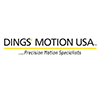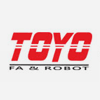SERVO / STEPPER MOTORS
ADDITIONAL RESOURCES
DINGS' MOTION USA
Stepper Motors
BLDC Motors
IP65 Motors
IP65 RATED ROTARY STEPPER MOTORS
Hollow Shaft Motors
SERVOTRACK - THE ULTIMATE STEPPER MOTOR CONTROLLER & DRIVER
Bridging the Gap Between Servo, Brushless DC, and Stepper PerformanceOur patented ServoTrackTM Technology makes it easy and cost effective to shift from stepping motor to servo performance. ServoTrackTM is a DYNAMIC CLOSED LOOP MOTION CONTROL TECHNOLOGY that eliminates unintentional stalling due to transient loads, and enables rotary torque and linear force control as an integral function of your design. AND you will NEVER lose functional control of your motor.
Quick summary of Capability:
Step motor systems have unique characteristics such as smooth motion, stiffness at stand still, easy setup, and low cost. Popular for decades, these systems continue to be a widespread choice among design engineers. More specifically, step motor technology provides several advantages over servo motor systems. One of these is inherently lower cost as compared to servo motors due to step motor construction. Step motors do not require tuning, allow for greater inertia mismatch and have a very high torque density. Because this torque is 100% available immediately upon startup, step motors can be very advantageous for applications requiring short, quick moves or when coupled with high inertia loads.
In addition, since step motors are synchronous motors with a high pole count, they are able to run smoothly at extremely slow speeds with minimal torque ripple. Both servo and step motors share a common identity as permanent magnet synchronous motors; however, there are differences that impact how the motors perform. For example, brushless servo motors typically have (2) to (8) magnetic poles on the rotor, whereas the 1.8 degree step motor has (50) poles. Due to this pole count difference, the step motor is, in essence, electromagnetically geared down as compared to the servo motor, allowing for better low end torque performance and positioning capabilities.
As with any technology, there are also some disadvantages associated with use of a step motor system. The most critical drawback is the loss of synchronization and torque (stall) if a large load exceeds the motor’s capacity and its ability to resynchronize once the load is reduced to a level within the motor’s capability. In addition, step motors tend to run hot due to use of full phase current, independent of load. In many cases, these disadvantages, along with the limitations associated with available ‘bridge’ technology to overcome them, may have influenced the decision to choose higher cost servo technology rather than traditional step motor technology.
THAT IS, UNTIL NOW…. ServoTrackTM closes this ‘bridge’ technology gap and provides a closed loop stepper system by eliminating unintentional stalling due to transient loads, or excess friction, and enabling torque control as an integral function of your stepper system. Why ServoTrackTM? After all, different variations of closed loop stepper systems have been introduced to the market in recent years. Unfortunately, most all of them accomplish the task through a form of PID (Proportional–Integral–Derivative) software, an algorithm similar to that designed for use in servo motor systems. As a result, optimization requires tuning of the closed loop stepper system, much like a servo system. Another consideration is that, as in the servo systems that they closely relate to, most closed loop stepper systems require a high-resolution encoder in order to get feedback and thus achieve the benefits of closing the loop. Response from these software-based controls is also limited to processing speed. As functionality is added or faster loop times are needed to maintain load requirements, higher speed processing becomes necessary and system cost increases. In contrast, ServoTrackTM accomplishes the benefits of “real time” closed loop control through the use of hardware, not software, with real time nanosecond updates.

